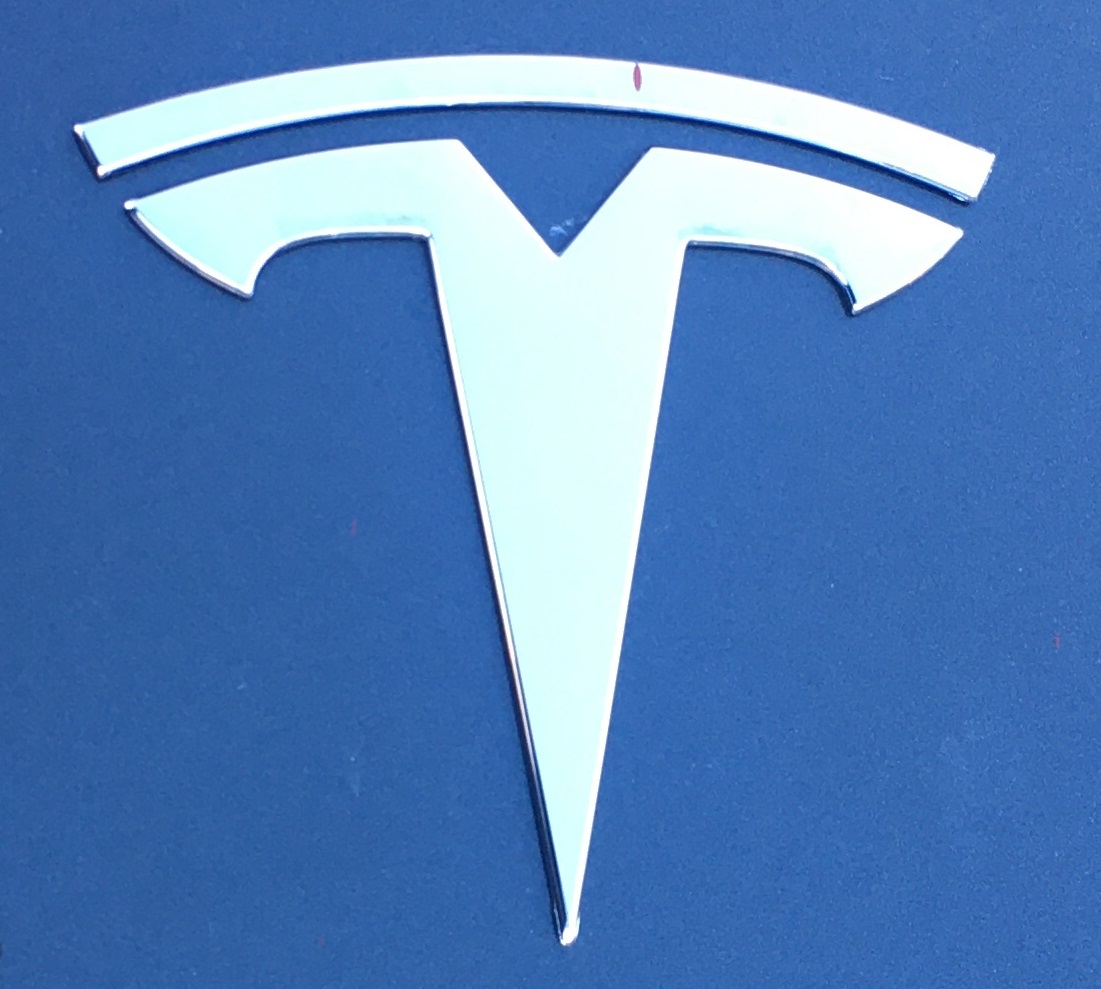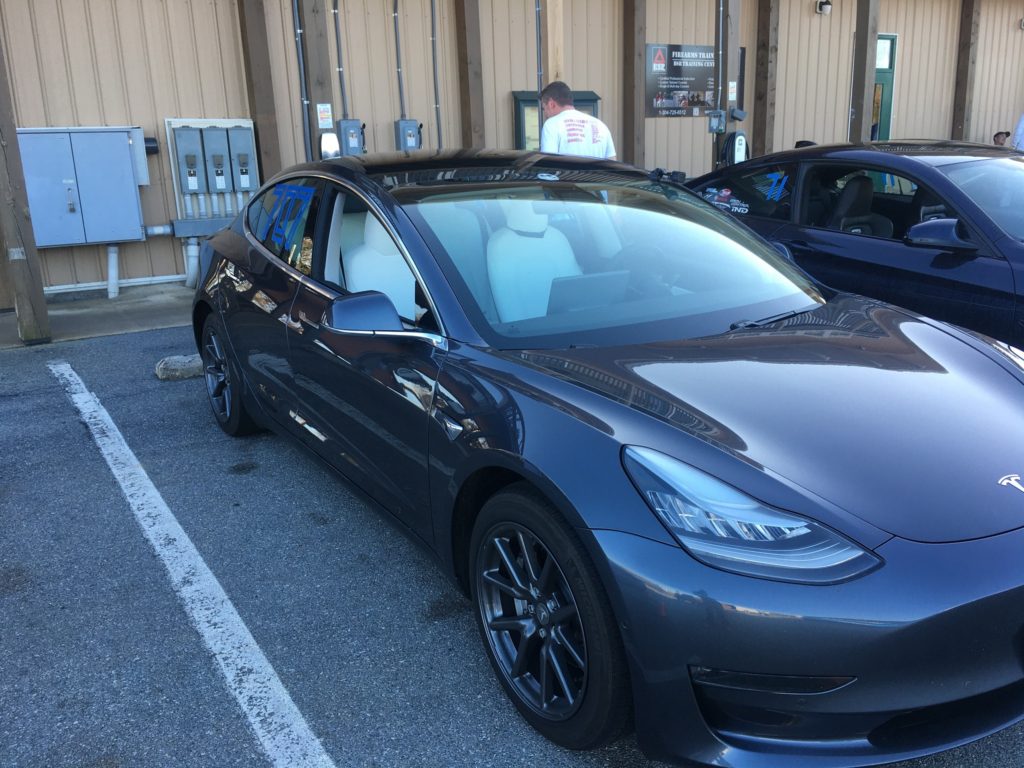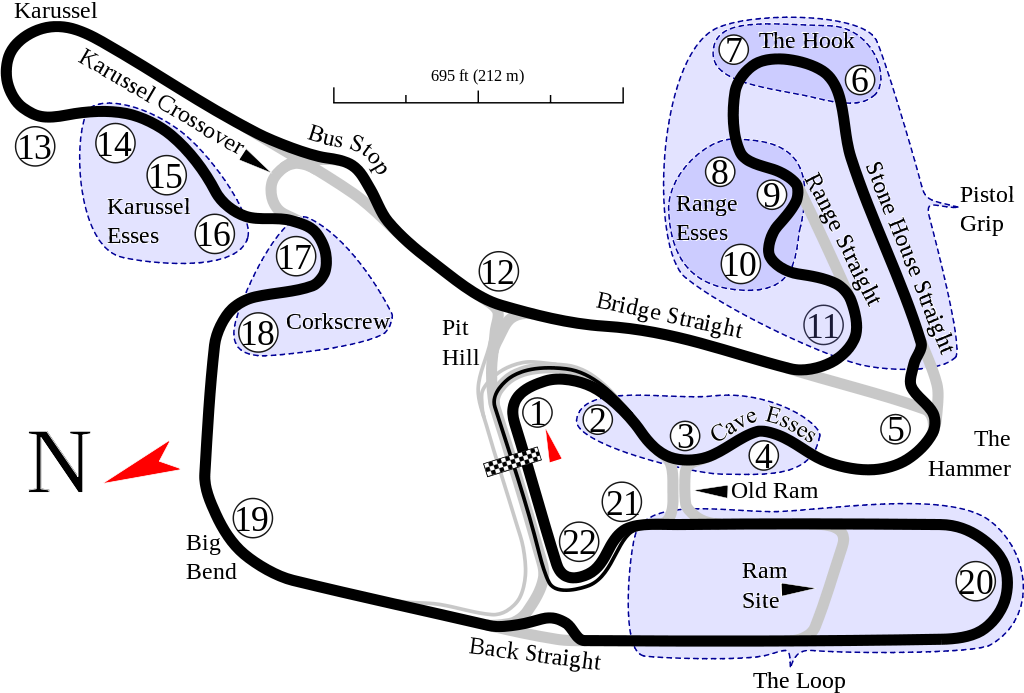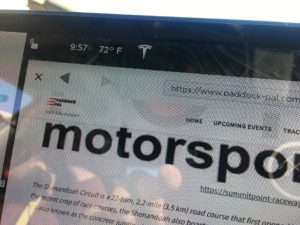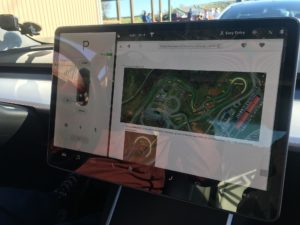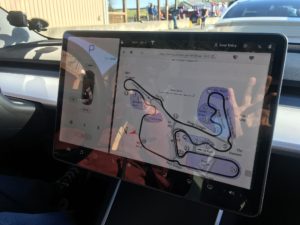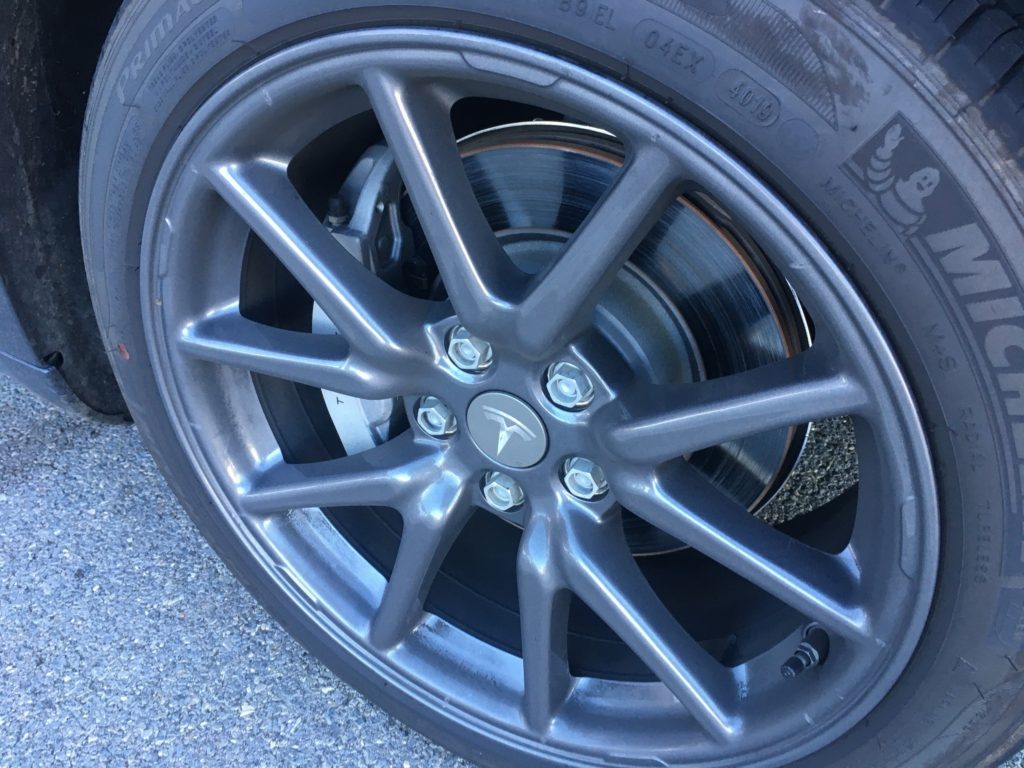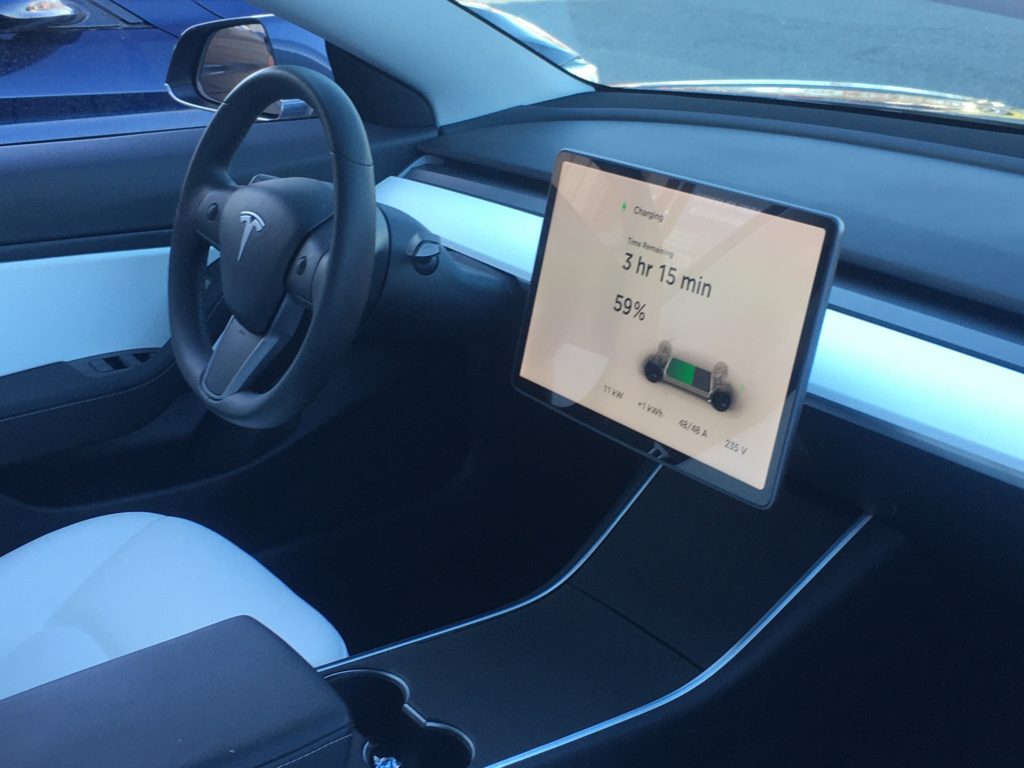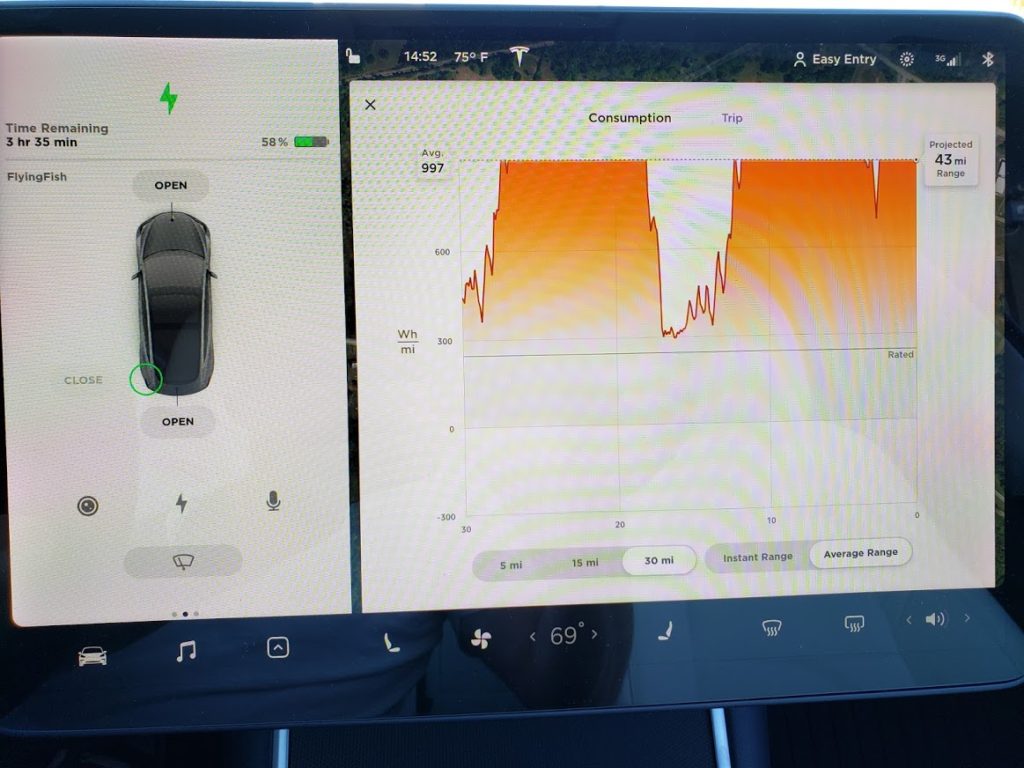As many of you have probably realized by now between the recurring EV sections of the Drive Thru on our Podcast Break/Fix and a few articles we’ve put together on EVs and Hybrids, I’m on the slower end of EV adoption… and being an IT nerd by profession that seems 100% counter-culture, but I always align myself as a Petrol-head first and that’s a hard habit to give up.
Going to a track day, you always seem to see the same cast of characters: Porsche, BMW, Corvette, Miata… and every once in a while, a brave soul brings out a Tesla. People generally seem to have two sides of the same reaction “whoa! look at that.” (for better or worse). But even more rare than seeing a Tesla at the track, is one driving on track (and not just for parade laps). And if we scale that down a bit more there’s very few coaches that have had the opportunity to experience and/or talk about what it’s like from the right seat in a Tesla.
This weekend, I got that chance! My student, Mark, was originally listed as “Blue – VW Golf R” and I will admit, I wasn’t too excited about being typecast yet again as “the VW instructor” – lets just say… it gets boring. I spent the better part of the morning roaming the paddock looking for said VW, and it was nowhere to be found. Hmm… Making a long story short, Mark had just recently traded in his VW for a Tesla as his new commuter car. And I said to myself… ok, this ought to be interesting. #whereistheVW
For this particular HPDE event, we started the day off with some braking and slalom exercises rather than the traditional orientation laps, classroom and #sendit recipe. Remembering what Tania M had told me about her experience with a Tesla Model 3 on track at last year’s Summer Bash 5; I recalled some advice about turning off all the nannies and emergency driving assists so that the vehicle would perform more like any other car. Mark and I agreed that it was in the best interest of both of us to disable everything we could.
Shenandoah Circuit
For those of you that have never been to Summit Point’s Shenandoah “Shenny” Circuit, it’s a modest 2.0 miles, with about 18 turns. To say that it’s a “busy track” is an understatement. It’s touted as Summit’s most technically challenging track, but also has a reputation of breaking cars. More importantly, it reveals the true nature of a vehicle and proves just how “good” your setup really is. The running joke is that if you can make a vehicle perform well at Shenny, it will be AMAZING anywhere else. More than being just technical, it’s also a challenging track for new drivers and even more so for the coaches. That being said… this was not my first rodeo – and I have more laps on Shenny than I’d like to ever publicly admit – so the Tesla was really the only new variable here.
After Mark had finished with all his exercises and classroom sessions, it was time to get out on track for a full lap. I would be remiss if I didn’t mention (and make a shameless plug for) Paddock Pal, which is a tool we’ve developed here at GTM to augment the classroom. Most people use/view it as a way to have an up-to-date digital schedule available on their phone, but there’s more to it than that… especially in a Tesla. With the large center console, we pulled up the Turn-by-Turn for Shenandoah and used it as a teaching tool while waiting on grid and debriefing in the paddock. This allowed us to look at the map, discuss corners and even watch videos about the lap. Mark said he found it “extremely helpful” as it was his first time on a Road Course.
Engage!
Having driven a Tesla 3 last year, I already knew the car was “quick” … but the 0-60 braking exercise proved how unbelievably fast this long-range DUAL MOTOR Tesla 3 was. I’ve never experienced sub-4 second 0-60 times, but now I have… WOW! And when it came to the slalom part, the Tesla started to show some of its true personality; which we’ll get into momentarily.
Our first couple of laps kept us bunched up with other cars (aka “a train”) under full course yellow for 3 laps. Once we broke free from the pack, the Tesla transformed from mundane daily commuter to attack weapon… in a hurry. Compared to other vehicles that were at the event like Z06 Corvettes, ZL1 Camaros, V8 M3 BMWs and other cars that would be a struggle to catch on any given Sunday, the Tesla makes quick work of those cars. Admittedly, I did feel that even though the 0-60 is incredible and it definitely gets to 100 mph just as quickly, once you’ve crossed the 100mph threshold, it does seem to hit a speed wall and struggles to get to 120. I could see that as an Achilles heel on larger tracks with more straightaway. #whereisthatcamaro
Going fast in the Tesla isn’t a problem, but its #1 limiting factor is the OE brake pads and tires. As many Tesla owners have said before – and I’ve experienced myself – the steering is a bit numb; but partnered with the Michelin Primax tires and massive amounts of understeer (dialed in for safety) the car tends to push quite a bit in corners. The chassis however is extremely rigid and you feel no flex or body roll. In my road test of a Tesla 3, I felt that for everyday conditions the suspension was taught and stiff, similar to coil-overs. However, once you put it through its proper paces, you start to realize that the suspension is quite a bit more “marshmallow-y” (we’re going to use that word) than expected.
Even though the Tesla has the ability to slow down via regenerative braking, on track there aren’t many instances to use it unless you “lift” in a corner. As we know, braking in a corner upsets the vehicle and it’s something else to work around. No regenerative “engine braking” to help slow the Tesla down means you’re forced to use the Brembos to the MAX! And the Tesla 3 is without-a-doubt HEAVY and the OE street pads fade almost immediately if you’re going deep into a braking zone. We chuckled a few times as warnings popped up on the console alerting the driver, “Brake temperature too high – Braking performance has been degraded” … gee, thanks.
Outside of all this, the number one question people asked us about the Tesla surrounded “consumption.” During the exercise sessions – which were relatively short – we didn’t use too much power. During a full 25 minute session, starting at 100% charge, the Tesla used about 33% of it’s long-range battery. The power charts (below) showed max power output for the entirety of the session which equated to about 1100w/hr!
By our simple math, we figured if you started the day with 100% charge you *could* run about 3 sessions before draining the system completely on a track like Shenny, but going somewhere like VIR or WGI would drop down to 2 sessions at most. So if you’re planning on going to the track with a Tesla be sure to recharge between sessions to get the most out of your day. Thankfully, Summit Point has Tesla charging stations in their paddocks for that quick refill of electrolytes. #staythirsty
The digital learning curve
As I mentioned earlier, this is a DUAL MOTOR Tesla 3, which in petrol-terms is relatable to AWD (All Wheel Drive). However, this really isn’t AWD in the same way many of us have become accustomed to. There is no mechanical link between the front and the rear of the vehicle. The best way I can explain how the system reacts on track – and not how it works – is like the early AWD systems you would find on a Porsche 964 or 993. The Synchro system VW devised back then was rear-wheel-biased (which the Tesla is), and once you’re about to have a code-brown moment, the front end catches up. This is true of the Tesla, as well, but it’s even more exaggerated by the way the front/rear motors talk to each other through the multitude of computers in between and the lack of driveshafts and LSDs.
So let me try to best describe how this all plays out… The Tesla is both unpredictable and awkward at the same time. You can take the same corner, the same way, at the same speed every lap… and one lap the front end will wash out, next lap the rear end will step out, the 3rd lap the front/rear motors will fight to keep the car under control. And it’s all very quick, disconnected and digital. Unlike a traditional vehicle where you can feel the engine slowing/accelerating the car and feel power being distributed through the drivetrain and the LSDs, none of that exists. And in some ways, as fast as the computers are, they’re still slower than human “feel” when you’re on track. #buttdyno #sphinctometer. And there are many “well, I didn’t expect that” moments in a lap. There is also another factor that plays into the handling of the Tesla and it’s all about how it accelerates. I mentioned earlier that the Tesla accelerates using warp speed… As member Drew A would say “it’s got all the Torquems” and more importantly they’re delivered all in one shot, unlike a petrol-engine where you ramp up to peak torque. “The pedal” (not to be confused with “the gas” or “the throttle”) is about as responsive as a light switch. It’s either on or off, so making subtle speed adjustments when cornering is difficult.
Needless-to-say, our first session was a learning experience for both of us. And thankfully, Mark, having a background in amateur Rally and AutoX, really showed off his skills a few times, keeping the Tesla pointed in the right direction. And I would be lying if I said that I didn’t yell “yeeeee-haw” a few times during that first session. All kidding aside, each debrief became a strategy session – I had no issues with Mark’s ability to drive the car. What we had was a problem in our ability to put down a consistent lap. After all of our experimentation, we did land on something that seemed to really work and play to the Tesla’s strength. I suggested to Mark that we try and drive it more like a Front Wheel Drive. Some of you might be scratching your heads right about now going “excuse me, wha?”
If I’ve said it once, I’ve said it 1000x – there is an art to driving FWDs fast on track and it’s not for everyone; but we can get into those finer details at another point. What we discovered with respect to the Tesla however, is that it worked! We gave up speed on entry, used slightly earlier apexes and what I like to call “anticipated understeer” to let the car track out where we wanted and once we felt that polar-moment settle, mash the throttle and let it pull us out of the turn… just like a FWD! Our laps suddenly became much faster, more predictable, smoother and much more fun! I have to admit that the right tire/brake combination, driven using this style… the Tesla is a force to be reckoned with.
As a coach, a vehicle is a vehicle whether it be a VW, a Corvette or a Tesla. “The line” is still the same and the physics of driving doesn’t suddenly change when you switch from Petrol to EV. What does need to adapt is the way you understand the nuances of any vehicles handling dynamics. As a coach, you need to be flexible and adapt to the vehicle and not just “teach by the book” because in many cases, like a FWD or a Tesla, the age old “this is how we’ve always done it because all true sports cars are Front Mount – Rear Drive” doesn’t apply.
Would I coach in a Tesla again? – Knowing what I know now, absolutely!
Is it my next track weapon of choice? – The jury continues to deliberate on that… 😉
THANK YOU!

A quick and special thanks to WDCR SCCA and the folks from VETmotorsports.org for putting on another spectacular Helmets Off to Heroes event; and for Summit Point Raceway for hosting us. It’s always a favorite event for GTM’ers to attend and participate in and we can’t thank everyone enough for the work they put into it. And to our veterans, and folks like my student Mark, we can’t thank you enough for your service – and we hope that we made your weekend a great one and look forward to seeing many of you again at a future HPDE. And an extra special thank you to VETmotorsports for presenting me with this Challenge Coin! It is definitely the highlight of my collection. Thank you again, great event, even greater cause!
Be sure to take a moment and express your respect to friends, family, co-workers, etc this Wednesday as you celebrate the day. Happy Veterans Day! – Thank You for Your Service. Be sure to follow us on Instagram @grantouringmotorsports for updates from this event.
#adaptandovercome #neverstoplearning
Like what you're reading? We rely on your financial support. For as little as $2.50, you can support Gran Touring Motorsports by becoming a Patron today. Become a Patron!

